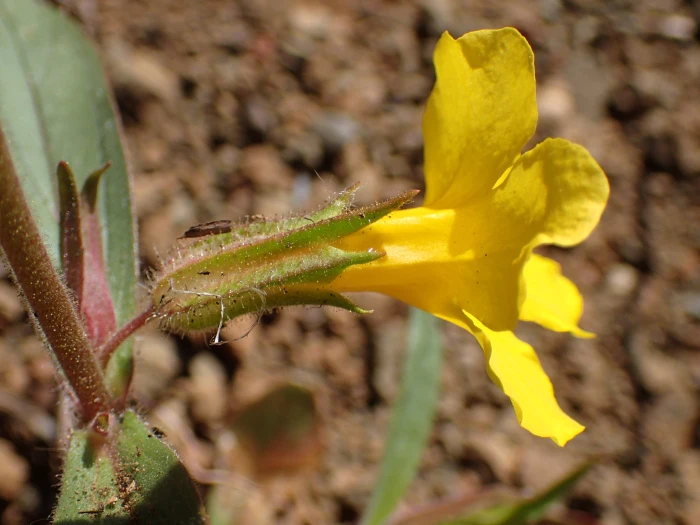Widethroat Yellow Monkeyflower
(Diplacus brevipes)
Widethroat Yellow Monkeyflower (Diplacus brevipes)
/
/

George Williams
CC BY 4.0
Image By:
George Williams
Recorded By:
Copyright:
CC BY 4.0
Copyright Notice:
Photo by: George Williams | License Type: CC BY 4.0 | License URL: http://creativecommons.org/licenses/by/4.0/ | Rights Holder: George Williams | Publisher: iNaturalist | Date Created: 2023-04-13T10:03:01-07:00 |


















Estimated Native Range
Climate Requirements for Joliet, Illinois
| This Plant | Your Site | Plant Suitability for Your Location | ||
|---|---|---|---|---|
| • Precipitation | 15" - 27" | 37" | Aquatic | Aquatic |
| • High Temp. | 84°F - 95°F | 86°F | Your summer temperatures are normal for this plant. | Excellent |
| • Low Temp. | 32°F - 43°F | 13°F | Your winter temperatures may be too cold for this plant | Too cold |
This plant may not grow well at your location - your precipitation is too high.
Summary
Diplacus brevipes, commonly known as widethroat yellow monkeyflower, is an annual herb that is native to the chaparral, coastal sage scrub, and oak woodlands of southern California and Baja California, often flourishing in open areas that have been recently cleared by wildfire. It typically grows to a height of 2-31 inches. The plant features an erect stem covered in fine hairs and lance-shaped to oval leaves that can reach up to 3.5 inches in length. The flowers are notable for their bright yellow corolla, which can be up to 1.2 inches long, with five distinct lobes at the mouth, and a tubular throat that is encapsulated in a hairy calyx with pointed tips. The flowering season is from late winter to early summer, and the flowers are quite showy, attracting pollinators such as bees.
Widethroat yellow monkeyflower is appreciated for its vibrant flowers and its ability to thrive in disturbed sites, making it a good choice for restoration projects and wildflower gardens. It is also used in border planting and as a ground cover in appropriate climates. This plant prefers full sun to part shade and requires well-drained soils. It is drought-tolerant once established, making it suitable for xeriscaping. While generally low-maintenance, it can be susceptible to fungal diseases in wet conditions.CC BY-SA 4.0
Widethroat yellow monkeyflower is appreciated for its vibrant flowers and its ability to thrive in disturbed sites, making it a good choice for restoration projects and wildflower gardens. It is also used in border planting and as a ground cover in appropriate climates. This plant prefers full sun to part shade and requires well-drained soils. It is drought-tolerant once established, making it suitable for xeriscaping. While generally low-maintenance, it can be susceptible to fungal diseases in wet conditions.CC BY-SA 4.0
Plant Description
- Plant Type: Herb, Subshrub
- Height: 1-2 feet
- Width: 1-2 feet
- Growth Rate: Moderate
- Flower Color: Yellow
- Flowering Season: Spring, Summer
- Leaf Retention:
Growth Requirements
- Sun: Full Sun, Part Shade
- Water: Low
- Drainage: Medium, Fast
Common Uses
Border Plant, Butterfly Garden, Drought Tolerant, Low Maintenance, Rock Garden
Natural Habitat
Native to chaparral, coastal sage scrub, and oak woodlands, flourishing in open areas cleared by wildfire
Other Names
Common Names: Salviastrum brevipes, Mimulus brevipes
Scientific Names: Diplacus brevipes, Eunanus brevipes, Mimulus brevipes
GBIF Accepted Name: Diplacus brevipes